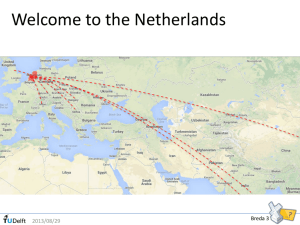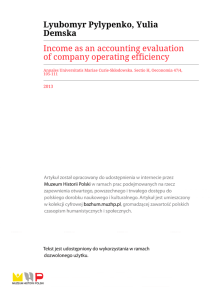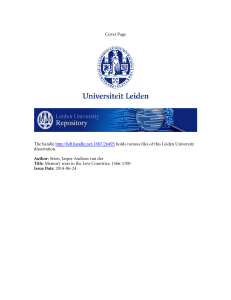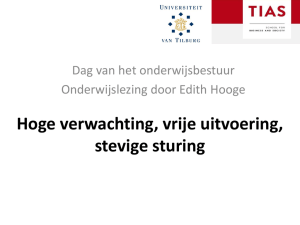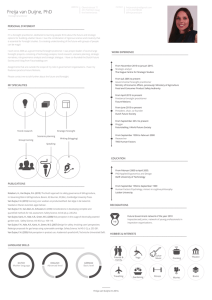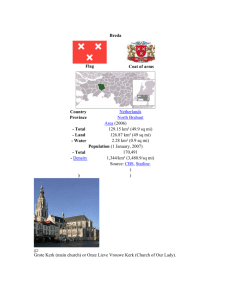Breda, Jacob Gijsbert Samuel van
advertisement
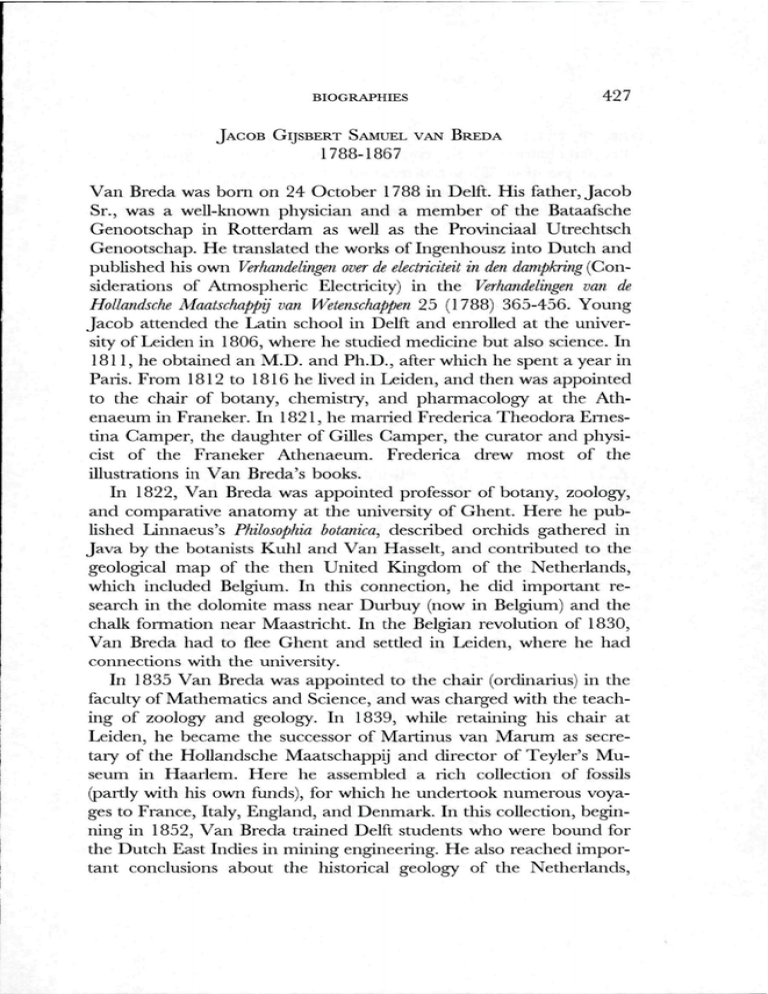
BIOGRAPHIES 427 JACOB GIJSBERT SAMUEL VAN BREDA 1788-1867 Van Breda was born on 24 October 1788 in Delft. His father, Jacob Sr., was a well-known physician and a member of the Bataafsche Genootschap in Rotterdam as well as die Provinciaal Utrechtsch Genootschap. He translated the works of Ingenhousz into Dutch and published his own Verhandelingen over de electriciteit in den dampkring (Considerations of Atmospheric Electricity) in the Verhandelingen van de Hollandsche Maatschappij van Wetenschappen 25 (1788) 365-456. Young Jacob attended the Latin school in Delft and enrolled at the university of Leiden in 1806, where he studied medicine but also science. In 1811, he obtained an M.D. and Ph.D., after which he spent a year in Paris. From 1812 to 1816 he lived in Leiden, and then was appointed to the chair of botany, chemistiy, and pharmacology at the Athenaeum in Franeker. In 1821, he married Frederica Theodora Emestina Camper, the daughter of Gilles Camper, the curator and physicist of the Franeker Athenaeum. Frederica drew most of the illustrations in V^an Breda's books. In 1822, Van Breda was appointed professor of botany, zoology, and comparative anatomy at the university of Ghent. Here he published Linnaeus's Philosophia botanica, described orchids gathered in Java by the botanists Kuhl and Van Hasselt, and contributed to the geological map of the then United Kingdom of the Netherlands, which included Belgium. In this connection, he did important research in the dolomite mass near Durbuy (now in Belgium) and the chalk formation near Maastricht. In the Belgian revolution of 1830, Van Breda had to flee Ghent and settied in Leiden, where he had connections with the university. In 1835 Van Breda was appointed to the chair (ordinarius) in the faculty of Mathematics and Science, and was charged with the teaching of zoology and geology. In 1839, while retaining his chair at Leiden, he became the successor of Martinus van Marum as secretaiy of the Hollandsche Maatschappij and director of Teyler's Museum in Haarlem. Here he assembled a rich collection of fossils (partly with his own funds), for which he undertook numerous voyages to France, Italy, England, and Denmark. In this collection, beginning in 1852, Van Breda trained Delft students who were bound for the Dutch East Indies in mining engineering. He also reached important conclusions about the historical geology of the Netherlands, 428 BIOGRAPHIES finding tertiary strata near Zutphen. In 1852 Van Breda was appointed chairman of the committee charged by the government with the preparation of a geological map of the Netherlands, a task completed by his student. Staring. Van Breda was well-known in international circles. He corresponded with, among others, Arago, Cuvier, and DecandoUe. Van Breda died on 2 September 1867 in Haarlem. Primary works Poggendorff, vol. 1, 285-86; vol. 3, 185. A list of Van Breda's publications can be found in the obituary by Matthes in: Jaarboek van de Koninklijke Akademie van Wetenschappen (1867) 22-32. Secondary sources A.S.H. Breure and J.G. de Bruijn, eds, Leven en werken van J.G.S. van Breda (1788-1867) (Haarlem: Hollandsche Maatschappij der Wetenschappen, 1979). C. de Waard, in: NNBW, vol. 1, 457-458. [A.V.H.]


